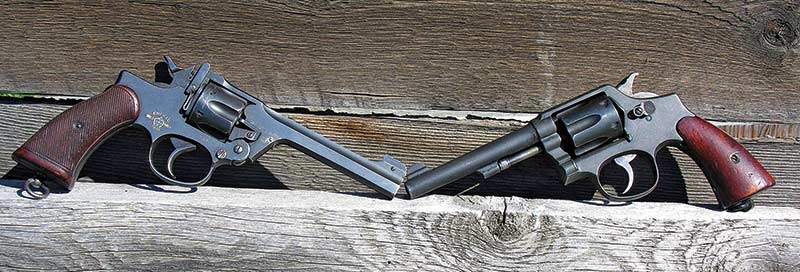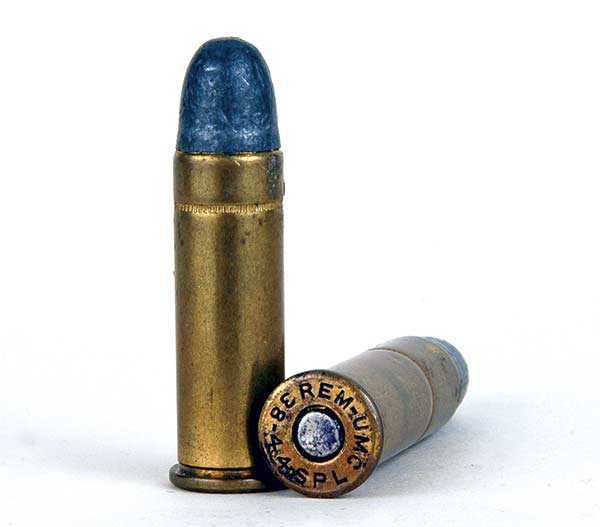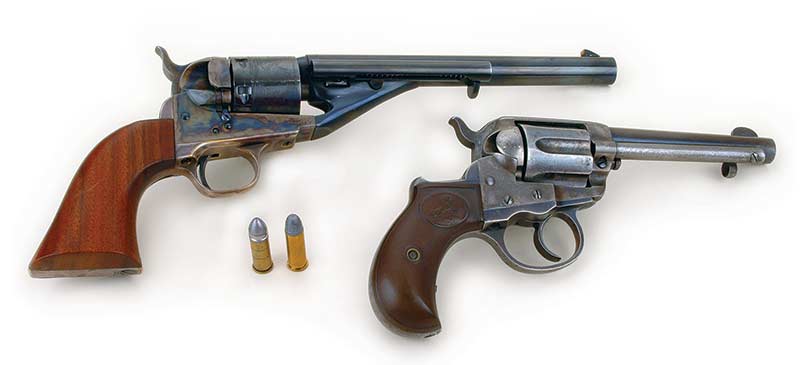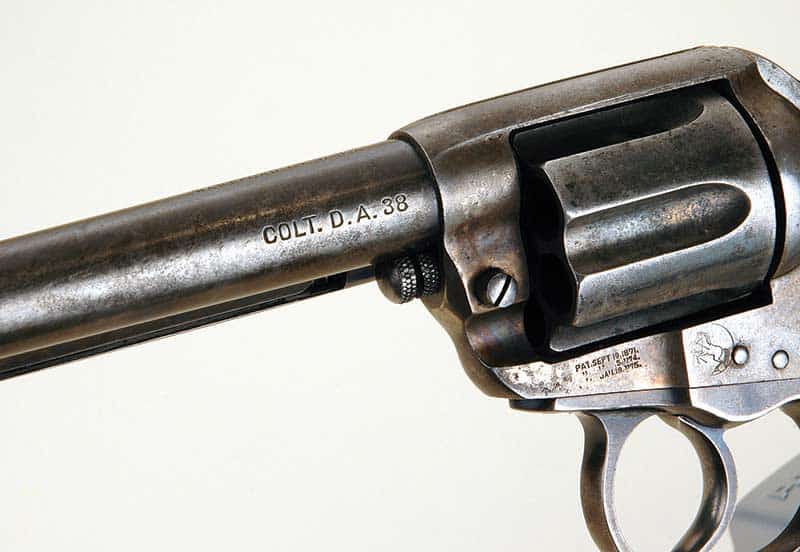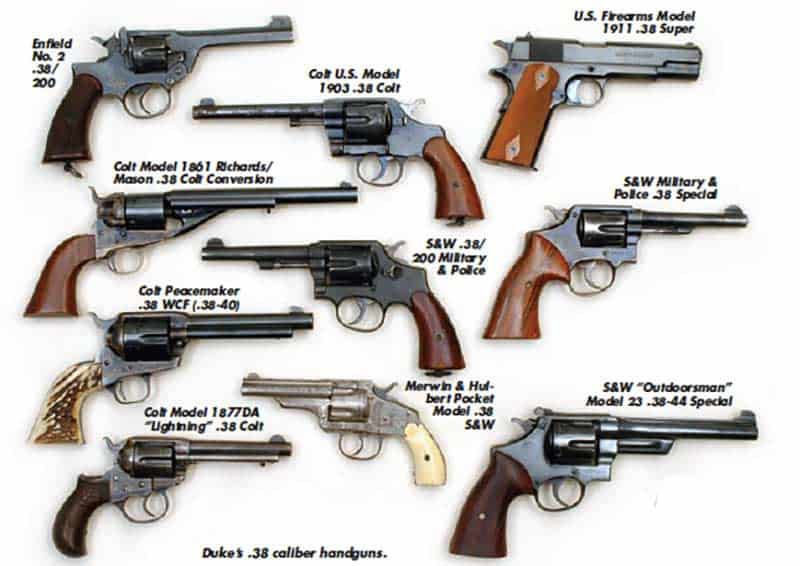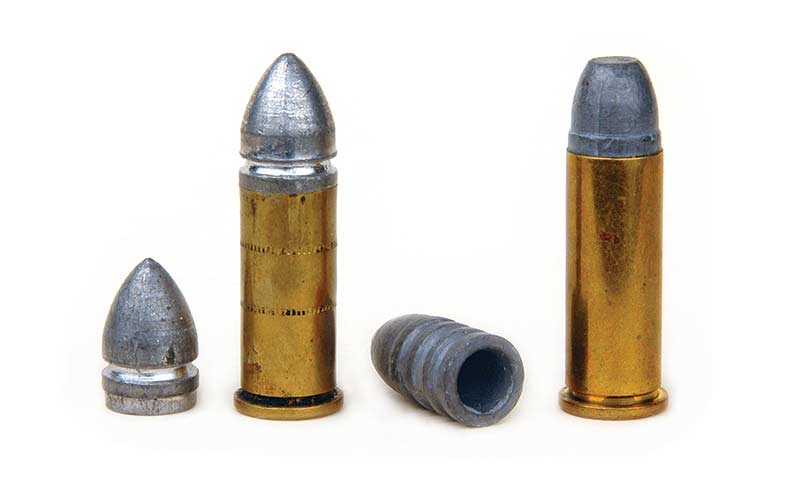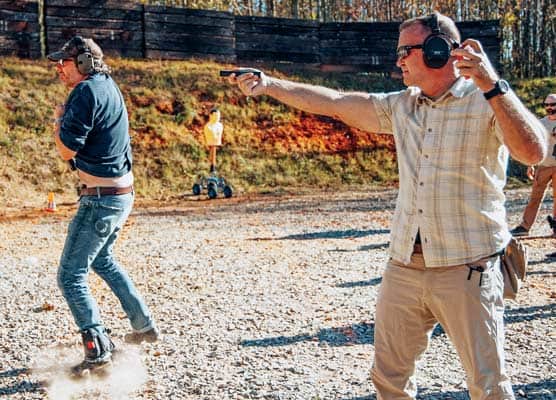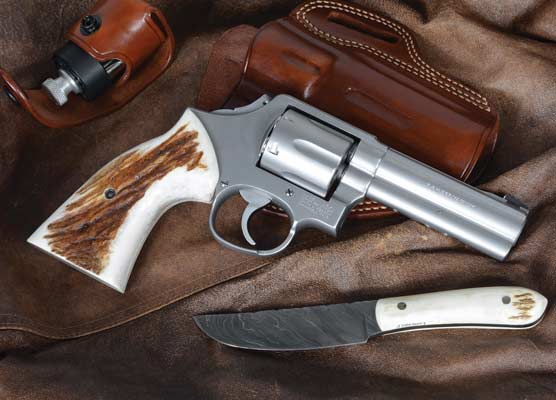Thirty Eights
Just Because It Says ".38" Doesn't Mean It Is
There has been a passel of .38s since the first metallic cartridge one was introduced in the early 1870s. There have been puny ones and snorty ones; rimfires and centerfires, civilian ones and military ones. Some .38s were meant only for revolvers and some only for autoloaders, but some of the revolver .38 cartridges ended up in autoloaders anyhow. Some .38s were indeed .38s but most were .35 caliber; at least one was .36 caliber, and one other was .40 caliber. There have been .38 Shorts and .38 Longs, .38 Specials and .38 Autos, .38 S&Ws and .38 Colts.
There is even a .38 Super, but there has never been a .38 Magnum despite what many mystery and crime novel hacks have written. That said there indeed has been a “.38 Magnum” in performance if not in name. Some .38 handguns, both revolvers and autoloaders, are awesomely accurate, and some .38 handguns, most usually revolvers, are much less accurate and I’ll explain why shortly. Most people in the know about such things consider the .38 Special as the minimum revolver cartridge that should be used for home/self defense. And I know for certain it is about the largest cartridge non-enthusiast people can be taught to shoot with any degree of proficiency.
About the first one of note was the .38 Colt, and it indeed used a .38 caliber bullet or pretty close to it. It came out about 1874 for Colt’s New Line pocket revolvers but it was also almost instantly put into what are called “conversions” although they really weren’t. (See Shooting Iron in this issue for details.) Then in 1877 Colt introduced their little double action .38 “Lightning” — so named by a distributor, not by Colt.
Now understand this; Colt bored the barrels of those early .38s with .375 inch groove diameters, which is nominally equivalent to their previous cap & ball .36 caliber revolvers. Then the ammunition was built with outside lubed, heel-type bullets running from about .376″ to .380″ in diameter. Cases were only about .88″ in length and held about 18 grains of black powder.

These are some but not all of the .38 caliber cartridges that have been introduced
since the 1870s. From left: .38 Short Colt (note heel-type outside lubed bullet), .38
Long Colt, .38 S&W Special, .38 S&W Special Super Police load with 200 grain bullet,
.38-44 Special, .38 Special US Military load with FMJ tracer bullet, .38 S&W, .38 Colt
New Police (interchangeable with .38 S&W), .38/200 British Military with FMJ bullet,
.38 Auto, .38 Super, and .38 WCF (.38-40).
Transition Time
About 1892 the U.S. Army decided it needed to transition from the big Colt SAA .45 that had been its standard for nearly 20 years, and they wanted not only a double action revolver, but a .38. For 17 years they depended (not solely) on various marks of a Colt .38 DA. My sample is the U.S. Army Model 1903, and sure enough it still has the .375″ barrel groove diameter.
But what is confusing is the U.S. Army determined there was a better system than the .38 Colt with its outside lubed, heel bullet. So they built the ammunition to have a .357″ diameter bullet to fit inside the cartridge case, but they had to lengthen the case to 1.03″ in order to still get 18 grains of black powder in there. What about shooting a .357″ bullet down a .375″ barrel? Well the military minds of that day were still familiar with Civil War type Minie balls with their deep hollow bases, so they built the new .38 Colt bullets with the same so they would expand and engage the rifling of those .375″ barrels. The revolvers and their ammunition weren’t world class shooters, but actually not too bad — at least in terms of accuracy, if not stopping power.
Thusly the .38 Colt became the .38 Long Colt and is so head-stamped on modern brass, but let me know if you ever see a handgun stamped “.38 Long Colt.” I’ve never encountered one. Nominal ballistics for .38 Long Colt are about 750 fps with the 150 grain bullet. Now back to 1876, when Smith & Wesson introduced their first .38. It was loaded with a 146-grain bullet in a case only about .76″ long with about 15 grains of black powder. Supposedly that load pushed the 146-grain bullet to about 730 fps. Smith & Wesson chambered it in their excellent quality, medium frame, top break revolvers, of which the “Baby Russian” came first. Another excellent quality revolver to be chambered for the .38 S&W was Merwin & Hulbert’s little “twist-break” one. Later, that company even brought out their own little .38 M&H cartridge, but it’s of no consequence whatsoever in the overall scheme of things.
However, so many other poor quality handguns were produced both in top break form and chambered for the .38 S&W that both gained a rather negative aura. When Smith & Wesson dropped top-break handguns altogether in the early 1900s and transitioned to side-swing double actions, the .38 S&W remained as a caliber option in their line up. Interestingly, whereas Colt and the US Government eventually decided on .357″ as proper bullet diameter for the .38 Colt, Smith & Wesson’s engineers gave its .38 a nominal .360″ bullet. Early in the 1900s Colt introduced a .38 New Police cartridge which was nothing more than the .38 S&W with a flat nose bullet. The two are completely interchangeable.
But Wait
The .38 story goes on, though. About 1928 the Brits decided their .455 Webley cartridge and its Mark VI revolver were too large for service use. Therefore, they adopted the little .38 S&W but loaded with a 200-grain bullet at only about 630 fps. The revolvers were named Enfield No. 2, and the cartridge the .380 Mk1. Later, because the Geneva Convention forbade the use of lead bullets, the Brits gave their little .38 a full metal jacket bullet which necessitated reducing bullet weight to about 178 grains. They actually kept such in service until well after World War II. Speaking of that conflict, as usual, we had to send the Brits guns and one was the Smith & Wesson Military & Police Kframe revolver. Since it was already being chambered for the .38 S&W, it fit their needs perfectly.
Now let’s back up again to 1899 when Smith & Wesson introduced the .38 S&W Special. That’s where confusion came in. Smith & Wesson’s .38s are similar, but the new .38 used a .357″ bullet. The earlier .38 S&W cartridge won’t chamber in .38 Special revolvers because it’s too fat. The new .38 Special was considered a real jump in power compared to the previous .38s. Its earliest loads used 21 grains of black powder with 158 grain bullets for about 850 fps. Only a few months after introduction, smokeless powder factory ammunition hit the scene too.
Smith & Wesson aptly named their K-frame revolvers “Military & Police.” They indeed served with both in the 1900s, with thousands being issued to US Navy and Marine aviators in World War II and probably millions being supplied to police departments nationwide. Until cops began to go semiauto in the 1980s, the .38 Special was the predominant law enforcement handgun caliber and had been so for about 75 years. And of course it was so inherently accurate, the bullseye target shooters used it as a standard. That’s where the revolver cartridge becoming an autoloader cartridge thing comes into play. Smith & Wesson produced their Model 52 semiauto for the .38 Special, but using only full wadcutter rounds.
And with the .38 Special is also where that .38 Magnum thing came from in terms of performance, if not in name. In 1930 police felt there was a need for more power from their revolvers so Smith & Wesson began chambering their big N-frames for a new .38 Special loading. It was called the .38-44 Special; meaning it was a more powerful .38 Special cartridge to be fired ONLY in revolvers built on a .44 size frame. The factory loads were even headstamped .38-44 Special, but interestingly the Smith & Wesson handguns themselves still just carried the .38 S&W Special caliber marking. That .38-44 factory load used the same 158-grain RN bullet as regular .38 Specials but propelled it at 1,150 fps. Today’s factory loaded .357 Magnums with the same bullet weight travel about likewise.
An Auto
It was also cop needs that got .38 Automatic calibers going — or sort of. Colt actually introduced their first .38 Auto in 1900 for one of John Browning’s early autoloader designs — the Colt Model 1902. It used a 130- grain FMJ bullet at about 1,100 fps. That’s kind of impressive ballistics considering Colt only started to warranty their big Single Action Army revolvers for smokeless powders that same year.
Then in 1928 with the law enforcement desire for more power, they upped velocity of the .38 Colt Auto to 1300 fps with the same bullet and then named it *.38 Super. That round was only supposed to be used in newly made Model 1911s and NEVER in the old Model 1902. That said, the only visible differences between the two rounds was that the Super used nickel-plated brass and the older one used plain brass cases and
one was headstamped .38 Super and the other .38 Auto.
And let’s not forget that .38 caliber that is actually a .40 caliber. That one is the .38-40, which actually first arrived named the .38 Winchester Centerfire (WCF). Winchester brought it out as a lever gun round in 1879 for their Model 1873 rifles and carbines. Colt started chambering it in their SAA and Model 1878DA in 1884 and it was also popular in their New Service double action, which hit the market right about the turn of the 19th/20th centuries. For some reason Winchester named this round “38” although it’s not. Bullets for it have always been .40 caliber, and its bottlenecked case is huge compared to any other .38 caliber handgun cartridge. Factory loads circa 1899 carried 38 grains of black powder with 180 grain lead bullets. That resulted in velocities of over 900 fps from 71⁄2″ revolver barrels. If you actually want to consider the .38-40 as a .38 caliber handgun cartridge then it certainly was the most powerful of the lot. Interestingly, it’s also an exact ballistic twin for today’s .40 S&W.
Anyway, like so many of you I got my handloading start with the .38 S&W Special, firing my new homemade loads in a S&W K-38. In those years I quit counting after having loaded over 50,000 .38 Specials. As my interests led me to Old West guns I also acquired and loaded for .38 Colt and .38-40 revolvers. Now in assembling a collection of World War II firearms I find myself shooting and loading for both a British Enfield No. 2 and a Smith & Wesson Military & Police chambered for their .38/200. Seems like I can’t get away from .38s!

Get More Revolver Content Every Week!
Sign up for the Wheelgun Wednesday newsletter here:

